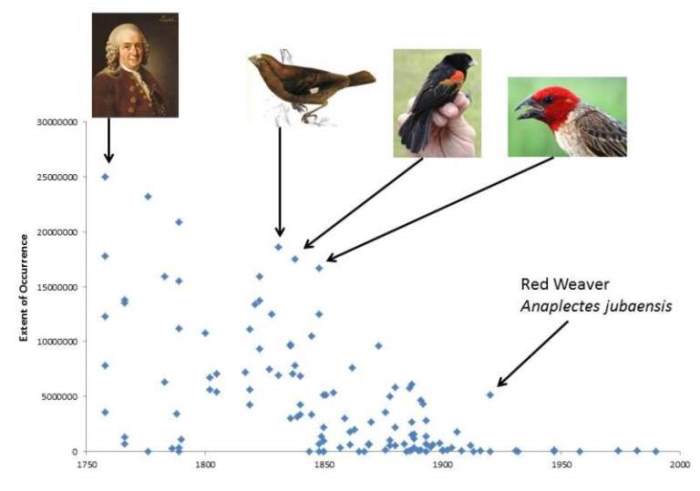Weaver news
Weaver Wednesday 4 [286] - Weaver themes [23]: Discovery overview - Extent of Occurrence2017-12-06 (811)
Weaver Wednesday 4: Weaver themes (Series)
Discovery overview - Extent of OccurrenceWeavers were described formally from 1758 onwards. The highest number of weaver species described per decade was in the 1880s (n=13) and 1890s (n=11). Some weavers have very large ranges, others very small. One would expect more widespread species to be discovered earlier. Plotting the range area (BirdLife International's Extent of Occurrence) versus year of publication does show a general trend of widespread species being described first, although throughout there were species with smaller ranges being discovered.Interestingly, Linnaeus described species with a variety of Range areas - these species were already known before the formal start date of 1758. Species on the outer edge of the graph - these are species with relatively wide ranges but were discovered later than expected, with notable examples being illustrated on the graph, ie. Thick-billed Weaver, Fan-tailed Widow, Red-headed Quelea, and Red Weaver. The latter was recently accepted as a new species by BirdLife International. Species near the bottom axis of the graph are species with very small ranges, including island species. The weavers with small ranges and described earliest are Madagascar Fody and Cape Weaver. After 1920, all new weaver species have relatively small ranges, although none of these are island species Data for Extent of Occurrence for weavers was obtained from:
|











